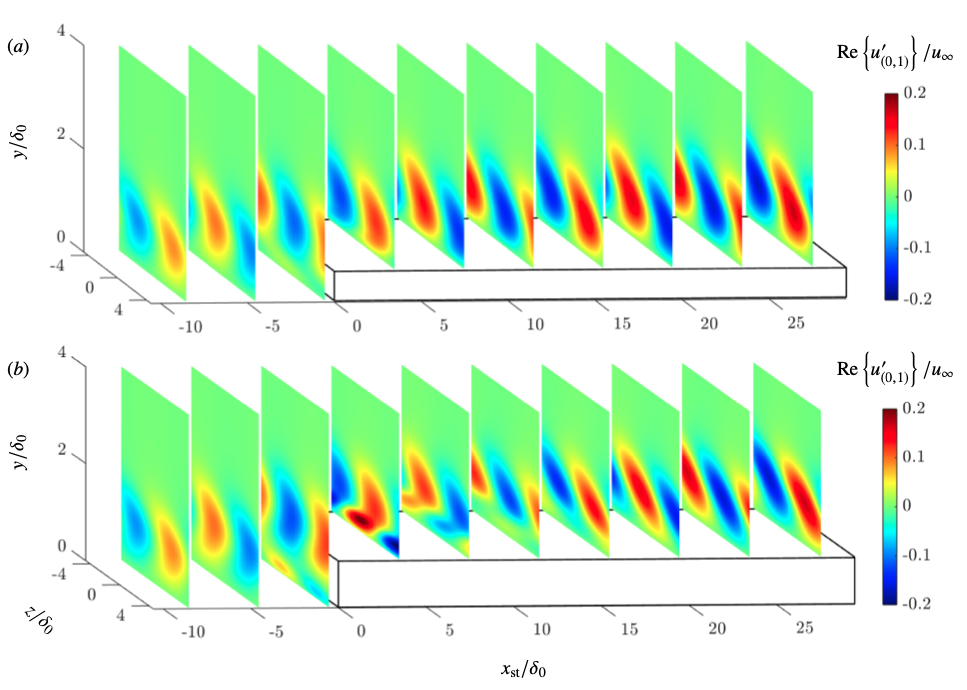J. Casacuberta, S. Hickel, M. Kotsonis (2021)
AIAA Scitech paper 2021-0854. doi: 10.2514/6.2021-0854
We study the interaction between a stationary crossflow instability and forward-facing steps in a swept-wing boundary layer using Direct Numerical Simulations (DNS). The station- ary primary crossflow mode is imposed at the inflow. Steps of several heights are modeled.
Particular emphasis is placed on ensuring a fully stationary solution, in order to isolate the modulation of the primary instability at the step and the generation of stationary secondary perturbations. The main features of the base flow are step-induced flow reversal and secondary inflection points. When approaching the step, the incoming crossflow instability lifts up and passes over it. Additional perturbation streaks arise, which are accompanied by secondary stationary vortices that have the same spanwise wavenumber as the fundamental crossflow disturbance. For sufficiently high steps, secondary perturbation structures attain amplitude values comparable in magnitude to primary instability in the vicinity of the step. We propose metrics to quantify the impact of the step on the development of the crossflow disturbance upon interaction. Considering energy-based criteria, we find that the crossflow perturbation is amplified upstream of the step. Interestingly, the incoming primary crossflow instability undergoes strong stabilization immediately downstream of the largest step. The mechanisms revealed in this work provide a first insight into the possible causes of transition on swept wings due to forward-facing steps.

Three-dimensional organization of the streamwise-velocity perturbation Fourier mode (0, 1) at the step location for step cases I (a) and III (b).
